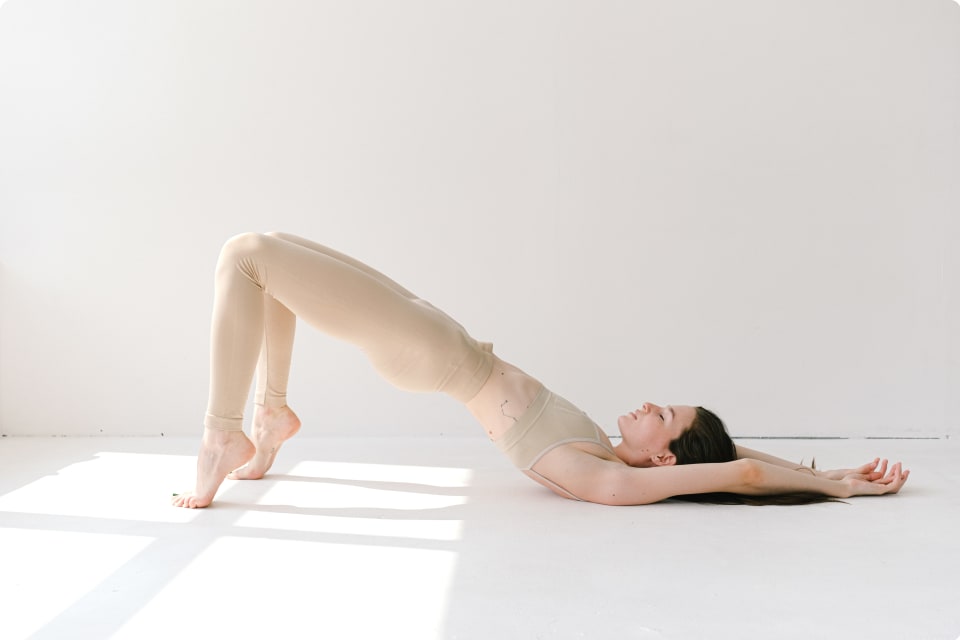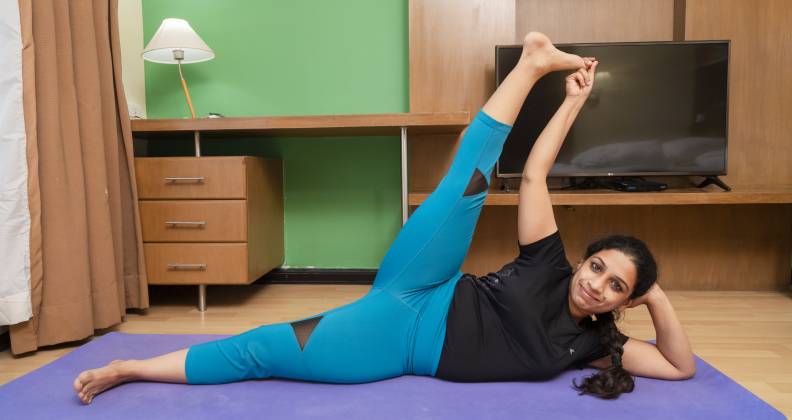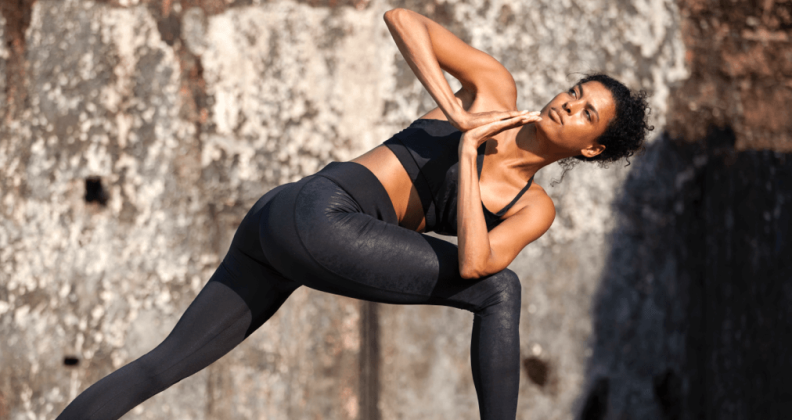Yoga for Teenagers: Building Strength and Flexibility Safely

Yoga is an ancient practice that originated in India thousands of years ago. It has since spread all over the world and has become increasingly popular among people of all ages, including teenagers. For teenagers, good posture and pain management are crucial for overall health and wellbeing. However, with busy schedules and technology taking up most of their time, teenagers often neglect the importance of good posture and pain management. That's where yoga comes in - a great option for teenagers to improve their posture and reduce pain.
Understanding Posture and Pain:
Bad posture is a common problem among teenagers, mainly due to their lifestyle habits. Sitting for long periods of time, carrying heavy backpacks, and poor sleeping habits can all contribute to bad posture. This, in turn, can lead to discomfort, fatigue, and even pain. Common types of pain experienced by teenagers include neck, shoulder, and back pain. While it may seem like a minor issue, bad posture and pain can have a significant impact on a teenager's daily life. Yoga can help by improving posture and reducing pain.
Yoga for Flexibility: Mind & Breath Awareness - Shrutika Sharad Umarji
Wed, Thu, Fri & Mon
5:00 - 6:00 AM
Yoga Poses for Improving Posture:
Practicing yoga can help improve posture by strengthening the muscles that support the spine and promoting proper alignment. Here are some yoga poses that can help improve posture:
1. Mountain pose:

Stand tall with your feet hip-distance apart, engage your core, and reach your arms up to the sky. This pose helps to align the spine and improve posture.
2. Tree pose:

Stand on one leg and place the sole of your other foot on the inside of your thigh, with your hands in prayer position. This pose helps to improve balance, stability, and posture.
3. Downward-facing dog:

Start on your hands and knees, lift your hips up and back, and reach your heels towards the ground. This pose helps to lengthen the spine and strengthen the upper body.
4. Cobra pose:

Lie on your stomach with your hands under your shoulders, and lift your chest up while keeping your shoulders away from your ears. This pose helps to strengthen the muscles in the back and improve posture.
5. Seated forward bend:

Sit with your legs extended in front of you, reach your arms forward, and fold over your legs. This pose helps to stretch the hamstrings, which can help alleviate lower back pain.
6. Bridge pose:

Lie on your back with your knees bent and your feet hip-distance apart, and lift your hips up towards the sky. This pose helps to strengthen the glutes, which can help improve posture and alleviate lower back pain.
Yoga Poses for Reducing Pain:
Yoga can also help reduce pain by stretching and strengthening the muscles that are causing the pain. Here are some yoga poses that can help reduce pain:
1. Child's pose:

Kneel on the ground, reach your arms forward, and lower your forehead to the mat. This pose helps to stretch the lower back, hips, and thighs, which can help alleviate pain.
2. Cat-cow stretch:

Start on your hands and knees, round your back towards the sky and then arch it towards the ground. This pose helps to stretch and strengthen the muscles in the back and neck.
3. Pigeon pose:

Start on all fours, bring your right knee forward towards your right wrist, and extend your left leg behind you. This pose helps to stretch the hips, which can help alleviate hip and lower back pain.
4. Butterfly pose:

Sit on the ground with the soles of your feet touching, and gently press your knees down towards the ground. This pose helps to stretch the inner thighs and hips, which can help alleviate hip and lower back pain.
5. Corpse pose:

Lie flat on your back, close your eyes, and focus on your breath. This pose helps to release tension and relax the muscles, which can help reduce pain.
Incorporating Yoga into Daily Routine:
Incorporating yoga into a teenager's daily routine can be beneficial for overall health and wellbeing. Here are some tips on how to incorporate yoga into your daily routine:
Schedule it in: Set aside a specific time each day for yoga practice. This can be in the morning, after school, or before bed.
Start small: Begin with just a few minutes of yoga practice each day and gradually increase the duration as you become more comfortable.
Practice with friends: Practicing yoga with friends can make it more fun and motivating.
Use technology: There are many online yoga classes and apps available that can guide you through yoga practice.
Find a comfortable space: Find a quiet, comfortable space to practice yoga, free from distractions.
Precautions:
Always listen to your body: It's important to pay attention to how your body feels during yoga practice. If a pose feels uncomfortable or painful, stop immediately.
Start slowly: As a beginner, start with gentle yoga poses and gradually increase the intensity and duration of your practice.
Seek guidance: If you're new to yoga, consider taking a class or working with a certified yoga instructor who can guide you through the proper form and alignment.
Avoid pushing yourself too hard: Avoid pushing yourself too hard to achieve a pose. Remember that yoga is a journey, and it's essential to honor your body's limitations.
Stay hydrated: Make sure to drink plenty of water before, during, and after your yoga practice.
Yoga is a great option for teenagers to improve their posture and reduce pain. By incorporating yoga into their daily routine, teenagers can strengthen their muscles, promote proper alignment, and reduce pain. Practicing yoga regularly can have a significant impact on a teenager's overall health and wellbeing. So, if you're a teenager struggling with bad posture or pain, give yoga a try and see the difference it can make in your life.
Frequently Asked Questions:
How does yoga benefit good posture?
Yoga can benefit good posture by strengthening the muscles that support proper alignment, increasing flexibility, and promoting body awareness.
How can I do yoga without pain?
To do yoga without pain, it's important to start slowly, listen to your body, and modify poses as needed. Working with a certified yoga instructor can also be helpful in ensuring proper alignment and form.
Why yoga is thought to be good for bones, joints, and posture of the body?
Yoga is thought to be good for bones, joints, and posture of the body because it promotes strength, flexibility, and proper alignment through various poses and breathing techniques.
How can you get relief from pain in different parts of the body through yoga?
Yoga can help relieve pain in different parts of the body by promoting relaxation, increasing circulation, and releasing tension in the muscles through specific poses and breathing techniques.
How do you think yoga could help in reducing pain and stress?
Yoga can help in reducing pain and stress by promoting relaxation, reducing muscle tension, improving circulation, and regulating the nervous system through various poses, breathing techniques, and meditation.
How does yoga help pain tolerance?
Yoga can help increase pain tolerance by promoting relaxation and reducing stress, improving circulation, releasing tension in the muscles, and promoting body awareness, which can help individuals better manage pain.
Online Yoga Classes – Live & Interactive
Get 2 free private yoga sessions and 2 weeks of unlimited group classes with authentic yoga teachers. No credit card required when you sign up today!
Share this post?
Interesting Articles
Yoga for Carpal Tunnel: Top 10 Yoga Poses, Benefits, FAQs
Do you ever experience pain or tingling in your hands and fingers? It could be carpal tunnel syndrome, a common condition that affects many people who...
Continue ReadingYoga for PCOS: How a regular yoga practice can help you relieve PCOS
PCOS affects 12% of women during their childbearing years. This incurable syndrome can affect many aspects of a womens day to day life as well as thei...
Continue ReadingYou’re Invited! MyYogaTeacher’s Free Yoga for Relaxation and Sleep Event
Are you ready to relax and sleep better? Announcing the three-day yoga event dedicated to just that from November 11-13!And we want to see you the...
Continue ReadingRecent Articles
Neck and Shoulder Yoga for Pain Relief : New 1-on-1 Series!
Announcing A New 1-on-1 Series! We’re offering a new series of 1-on-1 classes! Our Neck and Shoulder Yoga for Pain Relief is designed to hel...
Continue ReadingOur New And Improved Group Class Platform!
Here's a quick walkthrough of our new GC interfaceExciting news! Our platform got an upgrade!MyYogaTeacher is always evolvi...
Continue ReadingNew 1-on-1 Hip Opening Series: Unlock Freedom in Movement
The new transformative 1-on-1 Hip Opening Series, specially designed to release tension and boost strength and mobility in your hips, is the perfect w...
Continue Reading© Copyright 2020 MyYogaTeacher Inc




